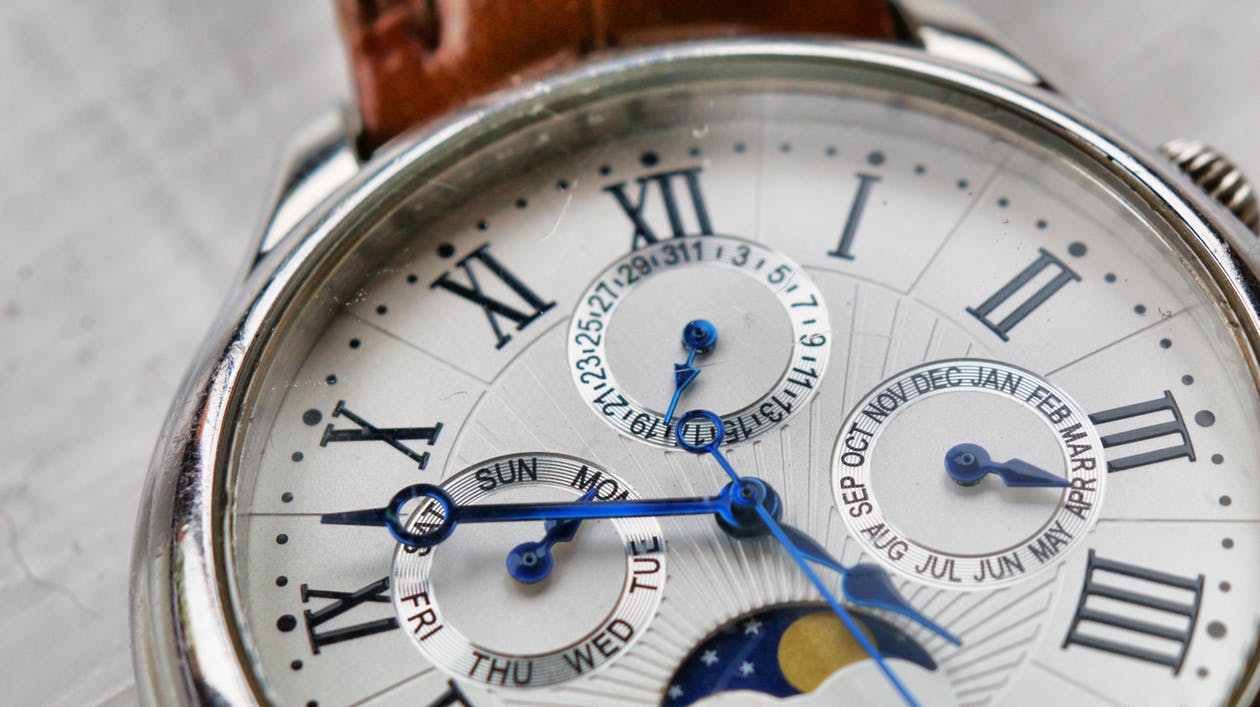Let’s face it; the world of watches is more complicated than you picture it to be. And yes, we’re talking about its seemingly endless list of terminologies, definitions and “moving parts.” But of course, there’s good news — just about anyone can get a better idea of what makes watches tick and even become pro while they’re at it.
So, if you’re a newbie in the world of timepieces and need a little help demystifying some of its mysteries, we’ll recommend you stick around. Why? Well, it’s only because we’ve done all the hard work and rounded up 14 watch-specific terms you’ll definitely want to know about.
Let’s dive in!
1: Automatic
This is basically a mechanical watch that doesn’t require winding as long as it’s on the wrist. So of course, with an automatic watch, the wearer won’t have to worry about twisting the crown (manual winding). Just the motion of the wrist is enough to move the oscillating weight or rotor that then provides energy to run the watch. In a nutshell; automatic watches must be worn or wound every other day — this is the only way to keep them powered.
2: Quartz
Also known as a battery-powered watch, timepieces in this category are usually more accurate and reliable than their mechanical counterparts. Essentially, these watches feature a special type of quartz crystal that moves when a battery-powered electric signal runs through it. Once this happens, the small quartz crystal will begin to vibrate at a precise rate thus the movement of the watch hands. It’s also good to know that quartz timepieces come with simpler internal components and also happen to be cheaper than mechanical watches.

3: Frequency
Measured in either hertz or vibration per hour, frequency is simply the speed at which a watch ticks or beats. It’s worth noting that most of today’s luxurious mechanical watches beat at a frequency of 28,000 VpH or 4Hz. It’s also important to note that the frequency of a watch is controlled by the oscillation of its balance wheel. Of course, the balance wheel is yet another terminology you should know about. It’s basically a weighted wheel that’s responsible for the movement of the watch’s gears and hands. The balance wheel oscillates at a consistent rate — usually one oscillation per fraction of a second.
4: Complication
Ever gotten a watch that does more than telling the time? More like one that comes with additional functions? If yes, you should be aware that those unique functions are known as complications. Some common complications include a moonphase indicator, chronograph, calendar, tourbillon just to name a few.
5: Chronograph
This is a type of watch that comes along with an additional stopwatch function. So basically, a chronograph does more than displaying the time. It features additional dials which can be activated by a set of pushers on the side of the watch. In the watch world, a chronograph can either be mechanical or quartz — it could also be a hybrid of both.
6: Perpetual Calendar
With a perpetual calendar complication, the watch will display the day, date, month and even update to accommodate for leap years.
7: Crystal
The crystal is a transparent cover that shrouds the dial and protects it from unnecessary damage. It’s good to point out that this component can be made from a variety of materials including synthetic sapphire, acrylic, and glass. Of course, sapphire is the most expensive among the three and also happens to be the top choice for luxury watches. What’s more, this material is incredibly strong and more scratch/shatter resistant than glass and acrylic.
8: Escapement
The escapement is perhaps one of the most important components of a mechanical watch. Also known as the heartbeat of the watch, the escapement is responsible for providing the impulses that maintain the oscillation of the balance wheel which in turn causes the watch’s seconds hand to move. So basically, the escapement of a watch regulates timekeeping and of course, it’s this component that’s responsible for its ticking sound. It’s also good to note that there are several different types of escapements most of which has been modified over the years. But the most common version used in today’s watches is known as the lever escapement.
9: Tourbillon
Originally intended for pocket watches, the tourbillon is a feature that showcases the ultimate in watchmaking precision. For the most part, tourbillon watches boast a special type of escapement (or movement) that rotates on an axis to counter the negative effects of gravity and allow for the most precise of timekeeping. It’s however important to note that this particular mechanism is extremely difficult to make and as such, they can only be found in the most expensive of models.

10: Bezel
The bezel is simply the metal that surrounds the dial or face of your watch. It’s worth noting that some bezels rotate and others remain stationary — the latter usually feature a scale for time, speed and other measurements, while the former is mainly decorative.
11: Balance Spring
Often referred to as a hairspring, the balance spring is a delicate component (attached to the balance wheel) that gives time rhythm and regulates oscillation rate. In a nutshell; the balance spring acts like the pendulum of a watch.
12: Case/Case Back
This is simply the body of the watch. Essentially, the case is home to all the inner workings and gears of a timepiece.
On the flip side, the case back is the reverse side of a watch case. Of course, this part can be removed by the wearer to check out inside of the timepiece.

13: Dive Watch
As the name implies, these watches are built and designed to be water-resistant. In essence, they can easily withstand extreme underwater pressure. It’s however important to note that not all water-resistant watches can be used in the deep blue sea. If you’re looking to buy one, you should confirm that it meets a specific standard for diving such as ISO 6425. The good thing is, all diving watches are tested to be water-resistant to at least 200 meters. But amazingly, there are also models that can provide up to 1000 meters water resistance.
14: Aperture
This is a small opening in the front of your watch that displays vital information including the date, day, month or moonphase.
And that’s it! 14 watch terms every watch lover should know. Of course, there are still many other terminologies in the glossary, but these should suffice for now. At this point, you can start wading through the wide variety of high-end watches for sale and get what you want like a pro! Good luck!









